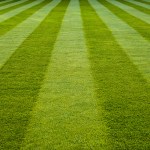lawns
On Pharyngula, PZ Myers doesn't just want cut your grass—he wants to tear it out by the roots and leave it to rot in the sun. He quotes J. Crumpler on The Roaming Ecologist, who calls lawns "sterile, chemically-filled, artificial environments [...] that provide no benefits over the long term; no food, no clean water, no wildlife habitat, and no foundation for preserving our once rich natural heritage." To make matters worse, lawnmower use adds carbon dioxide to the atmosphere, while beautiful bermuda grass requires a lot of H2O in a world that is increasingly insecure about water. During the…
Guest Post: Matthew Heberger Pacific Institute, Oakland, California
New monthly water use data for California water utilities shows that residential water use varies widely around the state, and that the response to the drought has been uneven. Moreover, in some areas, residential use averages more than 500 gallons per person per day, indicating that we could be doing much more to save water.
In July, the State Water Resources Control Board, or the Water Board, issued an emergency regulation to increase water conservation in urban areas. The new regulations prohibit certain water uses, like…
Figure 1: Monthly average precipitation showing the seasonality of precipitation in different parts of California, from the iconic California Water Atlas.
California has a “Mediterranean” climate, which means that each year it has a concentrated rainy season, followed by a long temperate and dry period. California’s rainy season typically runs from early October to late March, with very little precipitation outside of these months. (Figure 1 shows the average monthly rainfall for California.) It is now early 2014 and the rains have not come, for the third year in a row. While the …
